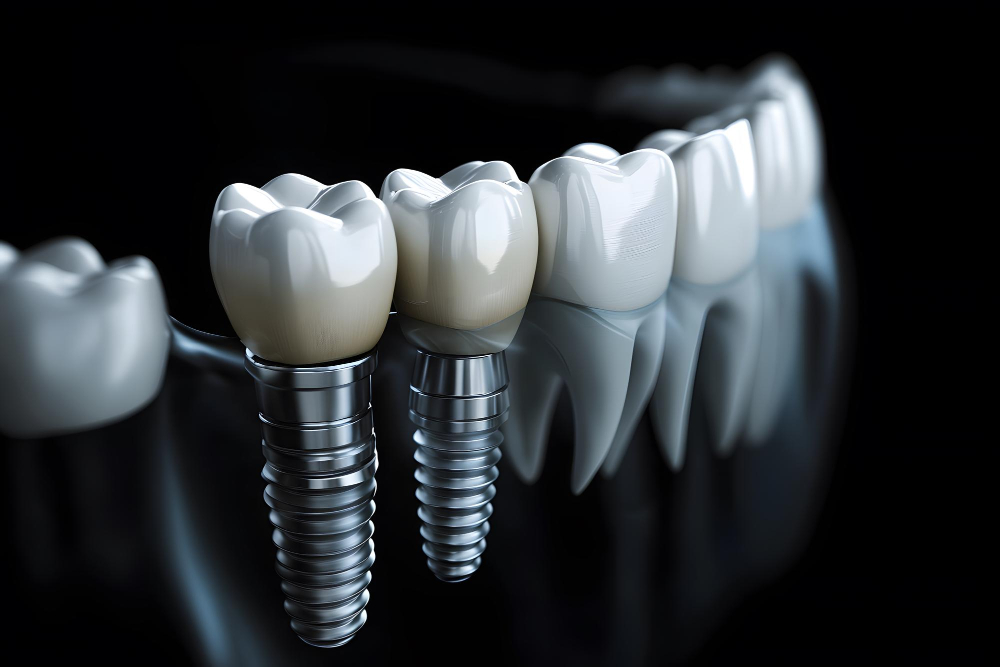When it comes to restoring damaged teeth, two of the most common treatments are dental crowns and fillings. Both play a vital role in repairing decay, fractures, or wear, but they serve different purposes depending on the severity of damage.
Choosing between a crown or a filling can be confusing, but understanding their differences, benefits, and when each is needed will help you make an informed decision about your dental health.
At Roots Dental Care, located in Hasbiguda and Jubilee Hills, we specialize in restorative dentistry, providing customized crowns and fillings to ensure your teeth stay healthy, strong, and beautiful. In this guide, we’ll cover:
✔ What fillings and crowns are
✔ The situations when each is needed
✔ The materials used in both procedures
✔ Step-by-step process for each treatment
✔ How to choose the right option for your teeth
By the end of this blog, you’ll have a clear understanding of which dental restoration is best suited for your needs.
What Are Dental Fillings?
A dental filling is a treatment used to repair small to moderate cavities, restore minor damage, and prevent further decay. It involves removing decayed or damaged parts of a tooth and replacing them with a filling material to restore its function and structure.
Common Types of Dental Fillings
Different materials can be used for fillings, depending on factors like location, durability, and aesthetics.
✔ Amalgam Fillings – Made from a combination of metals, including silver, tin, copper, and mercury. They are highly durable and ideal for back teeth where chewing pressure is highest.
✔ Composite Fillings – Made from a tooth-colored resin, providing a natural appearance. Perfect for front teeth or visible areas. However, they are less durable than amalgam.
✔ Ceramic Fillings – Made of porcelain, which offers excellent durability, stain resistance, and aesthetics. Commonly used in visible areas of the mouth.
✔ Glass Ionomer Fillings – These release fluoride, offering extra protection against decay. Suitable for children’s teeth or areas with less pressure, such as near the gum line.
When Are Fillings Needed?
✔ Small to moderate cavities – When decay has not severely weakened the tooth.
✔ Minor chips or cracks – Fillings can restore the shape and function of slightly damaged teeth.
✔ Early-stage tooth decay – If caught early, a filling prevents further progression.
✔ Tooth sensitivity – Caused by enamel wear or minor cracks, a filling can help reduce discomfort.
Dental Filling Procedure: What to Expect
- The dentist numbs the affected tooth with local anesthesia.
- The decayed or damaged part of the tooth is removed using a dental drill.
- The cavity is cleaned to ensure no bacteria or debris remain.
- The chosen filling material is applied, shaped, and hardened.
- The tooth is polished for a smooth finish and natural feel.
A filling is a quick, minimally invasive procedure, usually completed in one visit.
What Are Dental Crowns?
A dental crown is a tooth-shaped cap placed over a severely damaged or weakened tooth. Unlike fillings, crowns provide full coverage, restoring the tooth’s strength, function, and appearance.
Common Types of Crowns
Crowns come in various materials, each offering different benefits based on strength, durability, and aesthetics.
✔ Porcelain Crowns – Highly aesthetic and natural-looking, making them ideal for front teeth.
✔ Metal Crowns – Made from gold or metal alloys, these are extremely durable but lack cosmetic appeal, often used for molars.
✔ Porcelain-Fused-to-Metal (PFM) Crowns – Combines the strength of metal with the aesthetics of porcelain, offering a balance between durability and appearance.
✔ Zirconia Crowns – Known for exceptional strength, longevity, and natural appearance, suitable for both front and back teeth.
When Are Crowns Needed?
✔ Severely decayed teeth – When too much tooth structure is lost, and a filling is not enough.
✔ Cracked or fractured teeth – A crown holds the tooth together, preventing further breakage.
✔ After a root canal – Since root canal-treated teeth become weaker, crowns provide added protection.
✔ Excessive tooth wear – Due to grinding (bruxism) or acid erosion, crowns restore proper function.
Dental Crown Procedure: What to Expect
- The dentist numbs the tooth and removes damaged portions.
- The tooth is reshaped to accommodate the crown.
- An impression is taken to create a custom-fit crown.
- A temporary crown is placed while the permanent one is being fabricated.
- During a second visit, the final crown is cemented, restoring strength and function.
Crowns vs. Fillings: Key Differences
| Feature | Dental Fillings | Dental Crowns |
|---|---|---|
| Extent of Damage | Minor to moderate cavities | Severe decay or structural damage |
| Procedure Time | Single visit | Usually requires two visits |
| Durability | Lasts 5-10 years | Lasts 10-15+ years |
| Tooth Preservation | More natural tooth retained | Tooth reshaped for crown placement |
| Aesthetic Options | Tooth-colored options available | Highly natural-looking materials available |
Which Is Right for You?
If your tooth has minor to moderate damage, a filling may be sufficient to restore function and prevent further decay. However, if your tooth is severely weakened, cracked, or requires a root canal, a crown offers better protection and long-term durability.
At Roots Dental Care in Hasbiguda and Jubilee Hills, our experienced dentists carefully assess your oral health and recommend the best treatment tailored to your needs.
Conclusion
Both dental crowns and fillings play a crucial role in restoring and protecting your teeth. While fillings are ideal for minor repairs, crowns provide stronger reinforcement for severely damaged teeth.
If you’re dealing with tooth decay, fractures, or sensitivity, consulting a trusted dentist is the first step toward a healthier smile.
At Roots Dental Care in Hasbiguda and Jubilee Hills, we specialize in high-quality restorative dentistry, helping you achieve a strong, confident smile. Schedule an appointment today to find the best solution for your dental needs!


